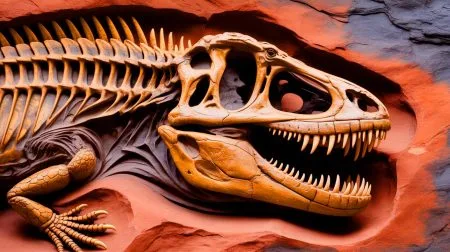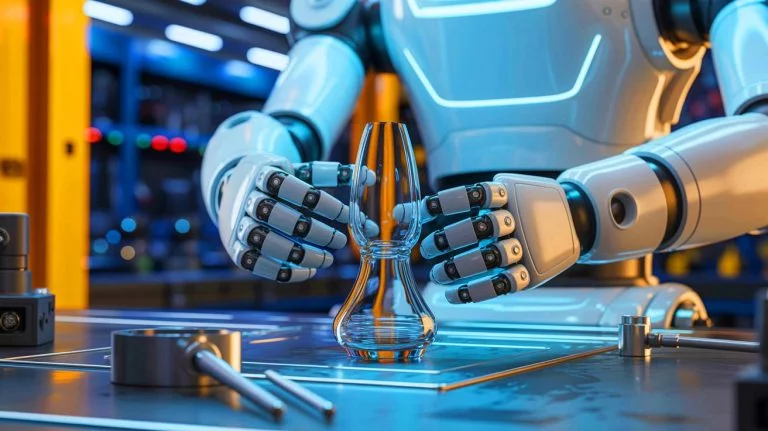| IN A NUTSHELL |
|
In a significant advancement for robotics, engineers from the United Kingdom have developed a breakthrough method that allows robots to grip objects with human-like finesse. This innovative technique enables robots to predict and prevent slips, ensuring a secure grasp on fragile or asymmetrical items. Such advancements are crucial as industries increasingly rely on automation, highlighting the potential for this technology to transform sectors like manufacturing and healthcare. By mimicking human reflexes, the new method aims to enhance the safety and reliability of robotic operations, promising a future where robots perform tasks with greater efficiency and care.
Robots to Take a More Human-Like Approach
The quest for robots to emulate human behavior has taken a significant leap forward. Dr. Amir Esfahani, an associate professor in robotics, emphasizes the importance of instilling human-like reflexes in robots. He explains that when people sense an object slipping, they don’t just increase their grip. Instead, they adjust their movements by slowing down or repositioning to secure the item. This nuanced response is what the new robotic method aims to replicate.
The research demonstrates for the first time the effectiveness of trajectory modulation for slip prevention. This approach allows robots to adjust their movement paths dynamically, rather than relying solely on grip force. Dr. Esfahani’s team has equipped robots with the ability to detect potential slips and make real-time adjustments, mimicking the instinctive reactions humans have honed over millions of years.
Such advancements open the door to more sophisticated robotic applications across various sectors. By adopting a more human-like approach, robots can handle delicate tasks with greater precision, reducing the risk of damage to sensitive items. This shift in methodology signifies a new era in robotics, where machines are not just tools but partners in various human endeavors.
Predictive Control System
The core of this innovative approach lies in a predictive control system, which is powered by a learned “tactile forward model.” This system allows robots to anticipate when an object is likely to slip by continuously analyzing their planned movements. This proactive strategy is a departure from traditional methods, which often rely on reactive force adjustments.
The predictive system’s ability to generalize across different objects and movements it wasn’t explicitly trained on is a testament to its robustness. This adaptability is crucial for real-world applications where robots encounter a myriad of unpredictable scenarios. Researchers believe this method could revolutionize automation in fields ranging from healthcare, where precise handling of surgical tools is paramount, to logistics, where sorting packages efficiently is key.
Esfahani’s optimism about the method’s potential underscores its transformative implications. By enabling robots to handle tasks with a level of dexterity akin to humans, this technology could redefine the boundaries of what robots can achieve, paving the way for their integration into everyday life.
Potential in a Variety of Industrial and Service Robotic Applications
The implications of this research extend far beyond theoretical applications. Dr. Esfahani and his team are confident that their approach has significant potential across a variety of industrial and service sectors. By ensuring a stable grasp during robotic manipulation, the method enhances dexterous and reliable performance, a necessity in many practical scenarios.
Traditionally, robotic slip control has relied heavily on grip force modulation, which can be limiting in certain situations. The study, published in the journal Nature Machine Intelligence, highlights trajectory modulation as a viable alternative. This method offers increased flexibility and precision, allowing robots to perform tasks that require nuanced handling.
The research team hopes that their findings will inspire further exploration in this area, encouraging advancements in robotics that could make these machines indispensable in daily life. As robots become more adept at handling a range of tasks, their integration into service roles could improve efficiency and safety across industries.
Slip Control Policy Based on Trajectory Modulation
The research also compares a slip control policy based on trajectory modulation with conventional grip-force-based approaches. The results are promising, demonstrating that trajectory modulation can significantly outperform traditional methods in specific scenarios. This finding positions trajectory modulation as a robust strategy for slip control.
The incorporation of a data-driven action-conditioned forward model within a model predictive control framework is crucial for optimizing this approach. This strategy not only enhances grasp stability but also improves the adaptability of robotic systems in dynamic and unstructured environments.
Researchers suggest that this predictive control framework, which leverages trajectory adaptation, offers a fresh perspective on slip mitigation. By enhancing the grasp stability of robots, this approach could improve their performance across various applications, from industrial settings to household tasks. The challenge now is to refine this technology further and explore its full potential in diverse contexts.
As we stand on the brink of a new era in robotics, the question remains: How will these advancements shape the future of work and daily life? As robots become more capable of performing complex tasks with human-like precision, the potential for innovation seems boundless. What other areas of our lives could be transformed by these intelligent machines?
Did you like it? 4.5/5 (21)







Wow, this is both exciting and a bit scary! Are we one step closer to robot overlords? 🤖
How does this technology compare in cost to traditional grip-force methods?
This could revolutionize healthcare! Imagine robots in surgery! 😮
Finally, robots that can hold my coffee without spilling it! ☕
What are the potential risks of this technology if it falls into the wrong hands?
Can this new tech be retrofitted to existing robots, or is it only for new designs?
Sounds like a movie plot. Next, they’ll be doing our taxes! 😂
Thank you for such an informative article! Really enjoyed learning about these advancements.
I’m curious, how do these robots “learn” the tactile forward model?
Could this tech be used in home robotics, like vacuums or cooking?
Does this mean robots will replace more human jobs? 😬
Great article! Looking forward to seeing this tech in action in the real world.
Interesting, but how reliable is this predictive control system over time?
Is this technology being tested in real-world scenarios, like factories or hospitals?
When will we see these robots in consumer products? Can’t wait! 🚀
Just what we need, robots that can sense when I’m tired of holding my phone. 😅
Can these robots differentiate between materials, like glass or fabric?
How do engineers ensure the robots don’t overreact to minor slips?
Sounds like we’re entering a new era of robotics. Exciting times ahead!
This could be a game-changer for elderly care. Robots with a gentle touch! ❤️
Does this mean robots will be able to play musical instruments?
Are there any ethical concerns with robots having such advanced touch technology?
Phew, at least they’re not giving them emotions… yet. 😜
Thank you for the article! It’s fascinating to see how far robotics has come.
How do engineers test these robots to ensure they don’t accidentally crush objects?
Could this technology help in environments that are dangerous for humans?
What’s next? Robots that can dance like humans? 🕺
How does this tech impact the energy consumption of robots?
I’m a bit skeptical. How do we know the robots won’t malfunction unexpectedly?
Loved the insight into trajectory modulation. Awesome stuff!
Does this tech mean robots will be more expensive to produce?
Are there any limitations to the types of objects these robots can handle?
So, robots with a human touch? What’s the world coming to? 😂
How long until we see these robots in our daily lives?
Thank you for sharing! Can’t wait to see what the future holds for robotics.
This is incredible! Imagine the possibilities in precision industries.
Are there any plans to integrate this tech into military applications?